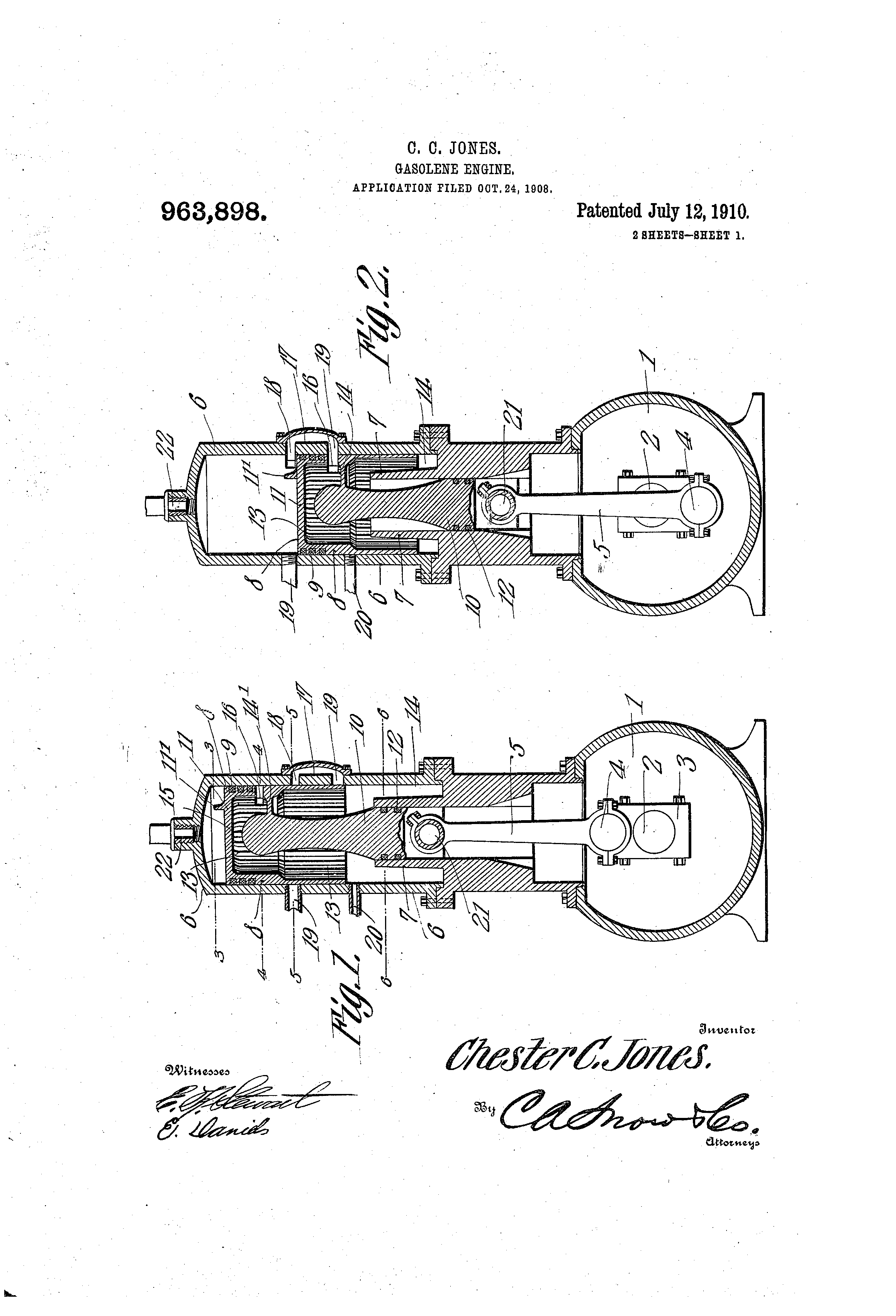|
Jonz (automobile)
Jonz, Brass Era automobiles and trucks were built by the Jonz Automobile Company from 1908 through 1914 in Beatrice, Nebraska. History The Jonz automobiles and Jonz trucks were built by the Jonz Automobile Company as an American vehicle from 1908 through 1914. The early vehicles were built at the Jonz factory at Seventh and Doane Streets in Beatrice, Nebraska and were later produced in New Albany, Indiana. The Jonz company was founded by inventor Charles Chesterfield ("C. Chester") Jones and his two brothers. Three different models of Jones' patented "vapor cooled engine" cars were initially offered, a roadster, a runabout and a touring car. These models could be ordered with one of three different versions of Jones' patented "Jonz Tranquil Motor". Unique Combustion Engine In 1908 Jones applied for a patent on a 2-stroke gasoline engine that he described as "new and useful" because of its claimed simplicity. The motor design used only five movable parts and did not use a typical r ... [...More Info...] [...Related Items...] OR: [Wikipedia] [Google] [Baidu] |
Brass Era Car
The Brass Era is an American term for the early period of automotive manufacturing, named for the prominent brass fittings used during this time for such things as lights and radiators. It is generally considered to encompass 1896 through 1915, a time when these vehicles were often referred to as horseless carriages. Elsewhere in the world, this period would be considered by antique car enthusiasts to consist of the veteran (pre-1904), and Edwardian eras, although these terms are really not meaningful outside the former British Empire. Overview Within the 20 years that make up this era, the various experimental designs and alternative power systems would be marginalised. Although the modern touring car had been invented earlier, until Panhard et Levassor's ''Système Panhard'' was widely licensed and adopted, recognisable and standardised automobiles had not been created. This system specified front-engined, rear-wheel drive, internal-combustion engined cars with a slidi ... [...More Info...] [...Related Items...] OR: [Wikipedia] [Google] [Baidu] |
Motor Vehicle Manufacturers Based In Indiana
An engine or motor is a machine designed to convert one or more forms of energy into mechanical energy. Available energy sources include potential energy (e.g. energy of the Earth's gravitational field as exploited in hydroelectric power generation), heat energy (e.g. geothermal), chemical energy, electric potential and nuclear energy (from nuclear fission or nuclear fusion). Many of these processes generate heat as an intermediate energy form, so heat engines have special importance. Some natural processes, such as atmospheric convection cells convert environmental heat into motion (e.g. in the form of rising air currents). Mechanical energy is of particular importance in transportation, but also plays a role in many industrial processes such as cutting, grinding, crushing, and mixing. Mechanical heat engines convert heat into work via various thermodynamic processes. The internal combustion engine is perhaps the most common example of a mechanical heat engine, in wh ... [...More Info...] [...Related Items...] OR: [Wikipedia] [Google] [Baidu] |
Cars Introduced In 1908
A car or automobile is a motor vehicle with Wheel, wheels. Most definitions of ''cars'' say that they run primarily on roads, Car seat, seat one to eight people, have four wheels, and mainly transport private transport#Personal transport, people instead of cargo, goods. The year 1886 is regarded as the birth year of the car, when German inventor Carl Benz patented his Benz Patent-Motorwagen. Cars became widely available during the 20th century. One of the first cars affordable by the masses was the 1908 Ford Model T, Model T, an American car manufactured by the Ford Motor Company. Cars were rapidly adopted in the US, where they replaced Draft animal, animal-drawn carriages and carts. In Europe and other parts of the world, demand for automobiles did not increase until after World War II. The car is considered an essential part of the Developed country, developed economy. Cars have controls for driving, parking, passenger comfort, and a variety of lights. Over the decades, a ... [...More Info...] [...Related Items...] OR: [Wikipedia] [Google] [Baidu] |



